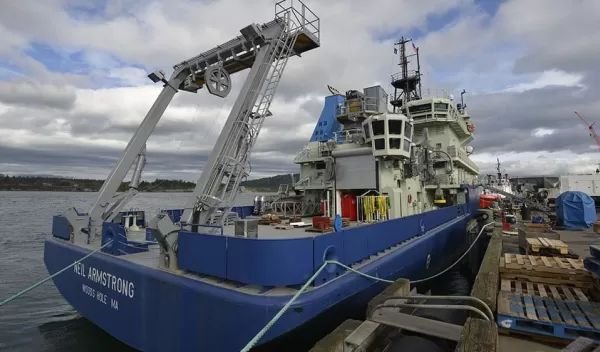
Expedition to service Ocean Observatories Initiative Pioneer Array
After 10 weeks of preparation, two weeks of isolation, documentation of negative COVID-19 tests, temperatures taken and personal protective gear in place, nine science team members from the Woods Hole Oceanographic Institution departed on the research vessel Neil Armstrong on June 7, 2020. They're on an expedition to service the Pioneer Array, a collection of ocean observing equipment off the New England coast 55 miles south of Martha's Vineyard.
The Pioneer mission is the first science expedition to leave Woods Hole following a "pause" in research expeditions imposed in March by UNOLS (the University-National Oceanographic Laboratory System). UNOLS coordinates the U.S. academic research fleet and has established guidelines for COVID-19 prevention and mitigation aboard the vessels. The journey aboard the R/V Armstrong is the second UNOLS science expedition to leave port with new stringent COVID-19 prevention protocols in place.
"We've worked extremely hard to implement measures that will help ensure the safety and health of our scientific party and crew members aboard the R/V Neil Armstrong," said Al Plueddemann, chief scientist for the Pioneer Array expedition and a research scientist at WHOI. "It's been an extensive planning and re-planning effort as our procedures had to adapt to changing circumstances."
The Pioneer Array provides continuous ocean measurements over a period of years. The data collected are sent by satellite to a network server on shore for use by scientists, educators and others. The data are available in as near to real-time as possible, and are helping advance ocean research, understanding of ocean processes and the changing ocean.
The equipment requires regular maintenance to ensure it can continuously collect and disseminate biological, physical and chemical ocean observations. The Pioneer Array is one of five ocean observing arrays collecting real-time data as part of the National Science Foundation-funded Ocean Observatories Initiative.


